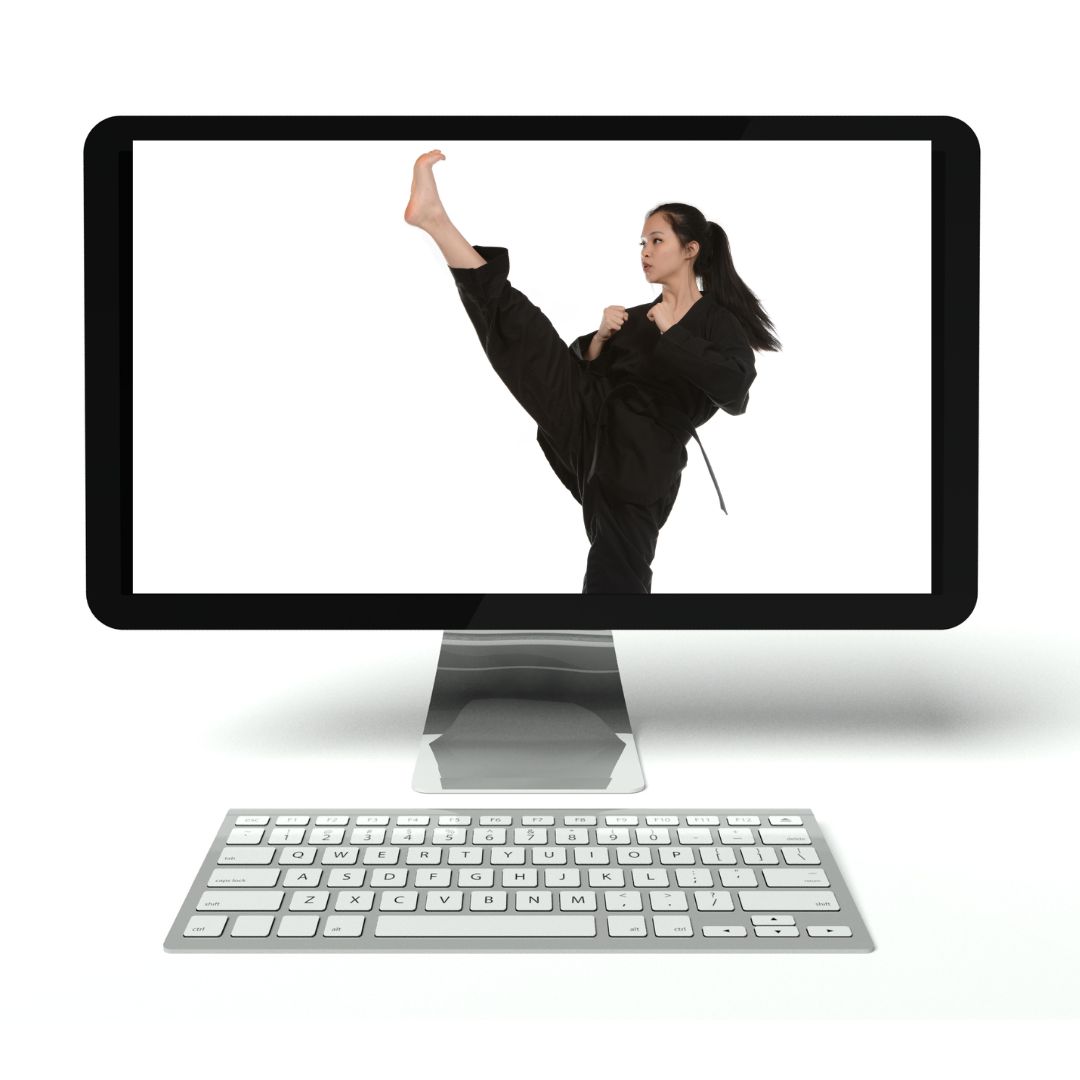
A Complete Art For Body & Mind

We believe Falling Leaves Kung Fu offers Arizona’s most comprehensive Tai Chi program. However, before going any further, we should clarify that this is not Taijiquan; it’s a program based on Tai Chi Principles.
Our program is based on the teachings of Grandmaster Sam FS Chin. His family’s martial art of I Liq Chuan has been refined over generations. Handed down from the mysterious nomads of ancient China to Chin, Lik-Keong, the grandmaster’s father. Grandmaster Sam learned the art from his father in Malaysia before coming to the US in 1990.
We have been offering our program in locations throughout Arizona since 2005. We have classes available in Tempe, Payson, and Sedona.
The foundation of our system is Zen philosophy and Tai Chi principles. Our program is designed to give the student a complete understanding of tai chi principles and how they can be applied to self-defense situations and every facet of daily life. It becomes a new way of thinking and looking at the world.
Our program covers everything from Qigong to meditation, striking and grappling, and even some firearms training!
By offering such a comprehensive curriculum, we can provide our students with everything they need to develop a deep theoretical and practical understanding of Tai Chi principles.
What Does Tai Chi Mean?
The basic principles of Tai Chi are rooted in the philosophy of Tao, which emphasizes the center, harmony of yin/yang, and flow.

The Tao Te Ching says, “From wuji to tai chi, from tai chi to yin/yang, and from yin/yang, everything arises.”
The literal translation of the Chinese characters 太極 (Tai Chi) is “supreme ultimate” or “grand ultimate.” However, it’s a mistake to translate many Chinese phrases literally.
The Old Masters were keen observers of nature. They recognized that nature works in a continuously flowing cycle. The characters hint at the two most extreme points in a cycle.
Yin/yang are not opposites; they are one but different. When awareness is there, we can clearly recognize the difference between things.
We can act with wisdom and skill when we see things as they are.
The Fundamental Principles Of Tai Chi

- Flow
- Relaxation
- Center
- Breath
- Awareness
Flow
The Tai Chi Classic by Wang, Zhongyue says, “no gap, no resistance” bù diū bù dǐng 不丟不頂. Like water, our movements should flow with the qualities of fluidity and fullness.
Water is an excellent example of how to flow with change. Water can adapt to its environment. It is always moving and constantly changing but always remains the same. Bruce Lee famously said, “water can flow, or it can crash!” Water can flow into the tiniest opening yet have the power to support a large boat or turn it over.
Related Article
The Tao is the way of nature. It is the path that all things follow; it is the way of change. Change and transformation are the fundamental quality of nature.
To flow is to change with the change; you put water in a cup, and it “becomes the cup.” When we flow, we learn to move based on our opponents’ pressure. Like water, where they are empty, we flow in, and where they are full, we flow around, or like a tidal wave, we crash.
The secret lies in awareness. More on this is below.
Relaxation
Tai Chi is the balance of yin/yang. When we balance the body with the cycle of yin/yang, we can let go of unnecessary tension in the body. We can respond faster, generate more power and move with a sense of ease and effortlessness.
The Tai Chi principle of relaxation is a prerequisite for flow. It’s tough to drive fast with one foot on the brake. Relaxation allows us the freedom to change.
Center
Grandmaster Sam likes to use the phrase bùlí zhòng 不離中. “Never leave the center.” However, there is not merely one center; there are many. The mind and body each have a center. Within the body, there are many lesser centers. Like a cloud of soap bubbles drifting through the air, the cloud has a center, but each bubble has its own center as well. With strong attention, we can hold more centers within the scope of our awareness.

“Everything is about the center; the center must be strong. Sometimes I use candlelight as an example.
When the flame is constantly flickering, you cannot see clearly. The light is steady when there’s nothing to disturb the flame, and you can see clearly.
If the center is shaky, there is no precise direction. Also, if the candlelight is too dim, you also cannot see the bigger view. You only see within a small area. If the candlelight is bright, you can see a bigger view more clearly.
You must hold the center stable to have precise direction and separation. To be strong, the center is balanced by multiple directions simultaneously.”
GM Sam FS Chin
Related Article
Breath control
Some Benefits of Breathwork
- Become calm & alert
- Improve performance
- Manage stress
- Improve health
- Stillness & Clarity
Learning to properly use the breath has always been essential to martial arts practice. The Old Masters knew long ago that the breath was the secret to both power and longevity.
Learning to relax and breathe freely allows us to maximize our performance under pressure, whether that’s the stress of a self-defense situation, competition, or high-pressure circumstances at work or home.
Skillful breathing allows us to hit harder, have more energy and improve our health. The secret lies within the diaphragm and its link to the autonomic nervous system: the vagus nerve.
The science behind breath control has started catching up to ancient wisdom; research is verifying the experience of the Old Masters. As a result, everyone from Olympic athletes to elite special forces operatives now practice special breathing techniques to help stay calm and alert, improve performance, or manage the stress of combat and high-stakes competition.
“Your body has numerous major systems, including the endocrine (hormone), cardiovascular, immune, gastrointestinal, and nervous systems. If you want to use the mind-body connection to lower your stress, cool the fires, and improve your long-term health, what’s the optimal point of entry into all these systems? It’s the autonomic nervous system (ANS).
Rick Hanson, Ph.D., Buddha’s Brain
When we master our breath, we can perform at our best, reduce stress, activate (or deactivate) our immune system, or even use it as a tool for personal growth and development.
Related Posts
Awareness
One of the main goals of our program is to cultivate a heightened sense of awareness, both within ourselves and externally, of our surroundings.
In his treatise on Zen and martial arts, Takuan Soho wrote, “the immovable mind is the mind that doesn’t stop.”
By “immovable,” Soho means a mind that can’t be moved away from the center of being “present, formless, and neutral.”
Soho continues, “In battle, if your mind goes to your opponent’s sword, it will stop there, and you will be cut down.”
Likewise, Grandmaster Sam says, “If my reference is clear, then from one point, it expands and returns back. Without this clarity, then we say that you will be very easily influenced.
In meditation, we say that you train until your focus is unshakable; what do I mean by unshakable? That means cannot be moved. Concentration so strong it cannot be moved. Mentally and physically cannot be moved. Your concentration must be that strong.”
A mind that can’t be moved off its center is free of anxiety, anger, and doubt. From the center, stillness and clarity can arise. The mind becomes calm, and we see things clearly, as they are.

Tai Chi For Self-Defense
Regarding self-defense, not all programs following Tai Chi principles are created equal.
When I first looked for a Tai Chi program, I took a free trial class at a well-known school here in Arizona. After spending 45 minutes working on a move from Yang-style Tai Chi known as “Wild Horse Parts Mane,” I asked what the self-defense application was.
The instructor looked at me blankly and said, “I don’t know. Let’s go check the book!”
I’ll give him credit for his honesty, but I don’t need to pay someone to teach me from a book, do you?
When spending your hard-earned money, do you want someone trying desperately to stay one lesson ahead of the class? Or do you want an instructor that has received direct transmission from a master?
Do you want an instructor who teaches fantasy or an instructor who understands the reality of applying their skills against a resisting opponent?

Grandmaster Sam Chin was known as “The Tiger of Malaysia.” He was undefeated in full-contact tournaments until he retired from fighting. The I Liq Chuan association even ran an open challenge to all comers in the local newspapers in Kuala Lumpur for many years!
Unlike my Sifu, I did not remain undefeated; however, I continued the tradition of testing I Liq Chuan’s application of Tai Chi principles in the ring. During the early 2000s, I traveled throughout the country, winning multiple championship medals before retiring from competition in 2007.
Related Post
If you’re looking for Tai Chi in Arizona, you won’t find a more comprehensive program. The principles of Tai Chi and Zen philosophy form the basis of our system, which has been handed down through the generations directly from the Old masters.
We offer classes in multiple locations throughout Arizona, including Tempe, Payson, and Sedona. Please contact us directly, and we will connect you with the regional instructor for class times and locations.
You will cultivate the skills of flowing, balance, breath control, and awareness.
Through those skills, you will gain a practical understanding of Tai Chi principles and how to apply them to everyday challenges and conflicts, as well as to hand-to-hand combat. Additionally, you will learn to relax under pressure and stay calm yet alert during life’s challenges.

























